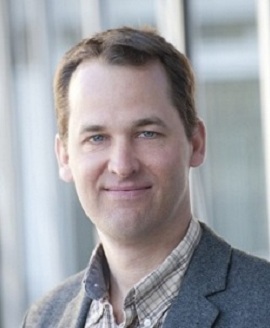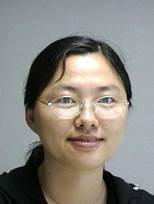 Prof. Dr. Matthias Ballauff is head of the institute for Soft Matter and Functional Materials at the Helmholtz-Zentrum Berlin für Materialien und Energie in Berlin as well as S-Professor at the Department of Physics of the Humboldt Universität zu Berlin. Prof. Ballauff is also co-chair of the JLSR. His research is devoted to the basic understanding and possible applications of colloidal and nanoscopic systems, characterized by neutrons, photons and dedicated labs for the profit of its users from soft matter, materials- and life sciences. (more…)
Prof. Dr. Matthias Ballauff is head of the institute for Soft Matter and Functional Materials at the Helmholtz-Zentrum Berlin für Materialien und Energie in Berlin as well as S-Professor at the Department of Physics of the Humboldt Universität zu Berlin. Prof. Ballauff is also co-chair of the JLSR. His research is devoted to the basic understanding and possible applications of colloidal and nanoscopic systems, characterized by neutrons, photons and dedicated labs for the profit of its users from soft matter, materials- and life sciences. (more…)
Key techniques:
- X-ray diffraction
- Neutron diffraction
- Cryo electron microscopy
 Prof. Christoph Koch, PhD is professor for structure research and electron microscopy at the Department of Physics at the Humboldt Universität zu Berlin since 2015. Prof. Koch is also co-chair of the JLSR. His research focuses on the development of new methods in quantitative electron microscopy, diffraction, and spectroscopy, as well as their application to materials science problems (more …).
Prof. Christoph Koch, PhD is professor for structure research and electron microscopy at the Department of Physics at the Humboldt Universität zu Berlin since 2015. Prof. Koch is also co-chair of the JLSR. His research focuses on the development of new methods in quantitative electron microscopy, diffraction, and spectroscopy, as well as their application to materials science problems (more …).
Key techniques:
- Transmission electron microscopy (TEM)
- Scanning electron microscopy (SEM), incl. analytical SEM & e-beam lithography
- Electron diffraction in TEM and SEM
- Inline holography with electrons and photons
 Dr. Yan Lu, is a Group leader at the Institute of Soft Matter and Functional Materials at the Helmholtz-Zentrum Berlin für Materialien und Energie in Berlin. Her research focuses on the Design and synthesis of colloidal particles with tailored mesoscopic structuresas well as Organic/inorganic hybrid particles and their application as energy storage materials, catalyst, sensor and solar cells. (more …)
Dr. Yan Lu, is a Group leader at the Institute of Soft Matter and Functional Materials at the Helmholtz-Zentrum Berlin für Materialien und Energie in Berlin. Her research focuses on the Design and synthesis of colloidal particles with tailored mesoscopic structuresas well as Organic/inorganic hybrid particles and their application as energy storage materials, catalyst, sensor and solar cells. (more …)
Key techniques:
 Prof. Dr. Jürgen P. Rabe has been Professor of Physics of Macromolecules at the Department of Physics at the Humboldt Universität zu Berlin since 1994. He researches the correlation between the structure and dynamics of molecular systems and interfaces with mechanical, electronic, optical and (bio-)chemical characteristics, from molecular to macroscopical length and time scales. (more …)
Prof. Dr. Jürgen P. Rabe has been Professor of Physics of Macromolecules at the Department of Physics at the Humboldt Universität zu Berlin since 1994. He researches the correlation between the structure and dynamics of molecular systems and interfaces with mechanical, electronic, optical and (bio-)chemical characteristics, from molecular to macroscopical length and time scales. (more …)
Key techniques:
- Imaging and manipulation of single macromolecules and supramolecular systems with a scanning force microscope (SFM)
- Tunneling microscopy and spectroscopy (STM/STS) of molecular systems
- Optical spectroscopy of molecular and organic/inorganic systems
 Prof. Dr. Simone Raux is head of the institute “Nanospectroscopy for Design and Optimisation of Energy-Related Materials” at the Helmholtz-Zentrum Berlin für Materialien und Energie in Berlin as well as S-Professor at the Department of Physics of the Humboldt Universität zu Berlin. Her institute works on developing novel nanostructured materials and hybrid materials that hold promise for the conversion and storage of energy. Prof. Raoux is also responsible for is the synthesis and analysis laboratory EMIL, which will soon offer unique possibilities for characterising materials in situ using the synchrotron radiation from BESSY II without interrupting the ultra-high vacuum.
Prof. Dr. Simone Raux is head of the institute “Nanospectroscopy for Design and Optimisation of Energy-Related Materials” at the Helmholtz-Zentrum Berlin für Materialien und Energie in Berlin as well as S-Professor at the Department of Physics of the Humboldt Universität zu Berlin. Her institute works on developing novel nanostructured materials and hybrid materials that hold promise for the conversion and storage of energy. Prof. Raoux is also responsible for is the synthesis and analysis laboratory EMIL, which will soon offer unique possibilities for characterising materials in situ using the synchrotron radiation from BESSY II without interrupting the ultra-high vacuum.
Key techniques:
- state-of-the-art synthesis and in-situ and in-operando X-ray analysis of materials and devices for energy conversion, energy storage, and energy efficiency